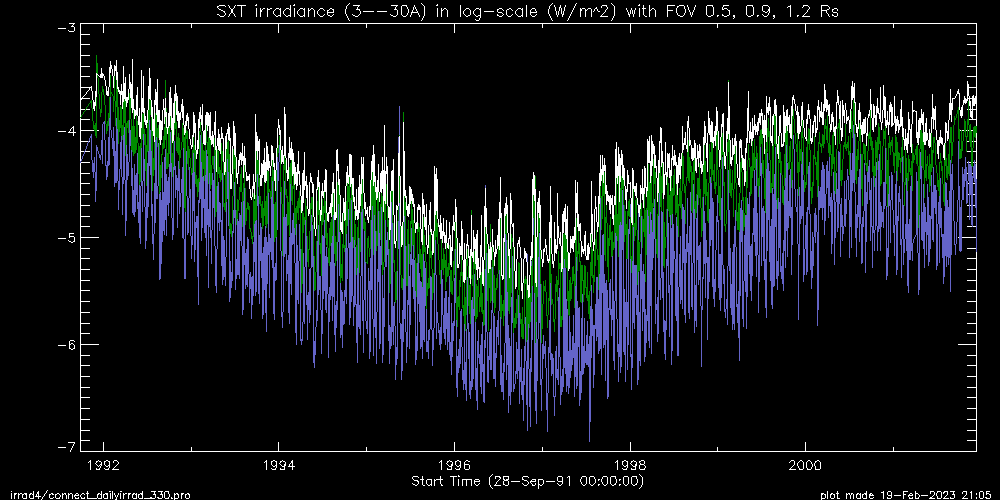
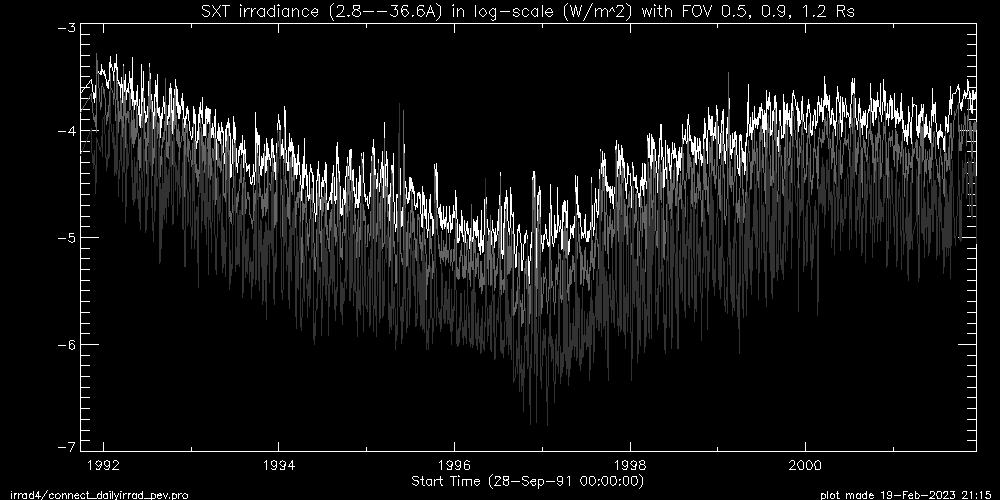
/disk/yla/software/yla_ssw/recal_resp/ --- for SXT response --- logTe: 5.50-8.00 by 0.05, wavelength: 0.05--500.0A by 0.05A solspec_ch1000_corona_chianti.genx solspec_ch1000_hybrid_chianti.genx solspec_ch1000_photos_chianti.genx --- for irradiance calculation (doesn't matter, SXT or XRT) --- logTe: 5.50-8.00 by 0.0025, wavelength: 0.05--210.0A by 0.05A solspec_ch1000_corona_chianti_xrtirrad.genx solspec_ch1000_hybrid_chianti_xrtirrad.genx solspec_ch1000_photos_chianti_xrtirrad.genx
~takeda/idlpro/y_legacy/sxt_resp/calc_sref.pro
~takeda/idlpro/y_legacy/sxt_resp/sxt_teem2new.pro IDL> calc_sref, ii_al, sre_str,/corona IDL> sxt_teem2new, 2,dsig_al,3,dsig_am,te,em, d_te,d_em, sre_str=sre_str
/disk/data/albanese/s2_2radii/maskedal1991_2radii.genx /disk/data/albanese/s2_2radii/maskedam1991_2radii.genx
~takeda/idlpro/y_legacy/irrad4/get_mdisksig.pro output file: /disk/yla/takeda/sxt_irrad3/disksig/mdsigarr_1991.genx
~takeda/idlpro/y_legacy/irrad4/msig2teem.pro output file: /disk/yla/takeda/sxt_irrad3/teem/mteemarr_1991.genx
~takeda/idlpro/y_legacy/irrad4/make_daily_mteem.pro output file: /disk/yla/takeda/sxt_irrad3/teem/daily_mteem_1991.genx
~takeda/idlpro/y_legacy/irrad4/daily_mteem2irrad_pevtsov.pro output file: /disk/yla/takeda/sxt_irrad3/irrad/daily_mirrad_pevtsov_2001.genx IDL> restgen,file='/disk/yla/takeda/sxt_irrad3/irrad/daily_mirrad_pevtsov_2001',/inq ..... Data Section ..... ** Structure MS_099025295074, 6 tags, length=38656, data length=38652: DATE STRING Array[284] M_IRRAD DOUBLE Array[5, 284] WBIN FLOAT Array[2] FRAD FLOAT Array[5] M_TEARR DOUBLE Array[5, 284] M_EMARR DOUBLE Array[5, 284] -----------------------------------------------------------
[click image to enlarge]
| SXT irradadiance 3-30A with FOV 0.5,0.9 & 1.2Rs | 2.8-36.6A (same as Pevtsov et al 2003) |

|

|
| SXT irradadiance 3-30A, FOV: 1.1Rs vs 1.2Rs | shifted curves (0.933, 0.904, 0.927) |
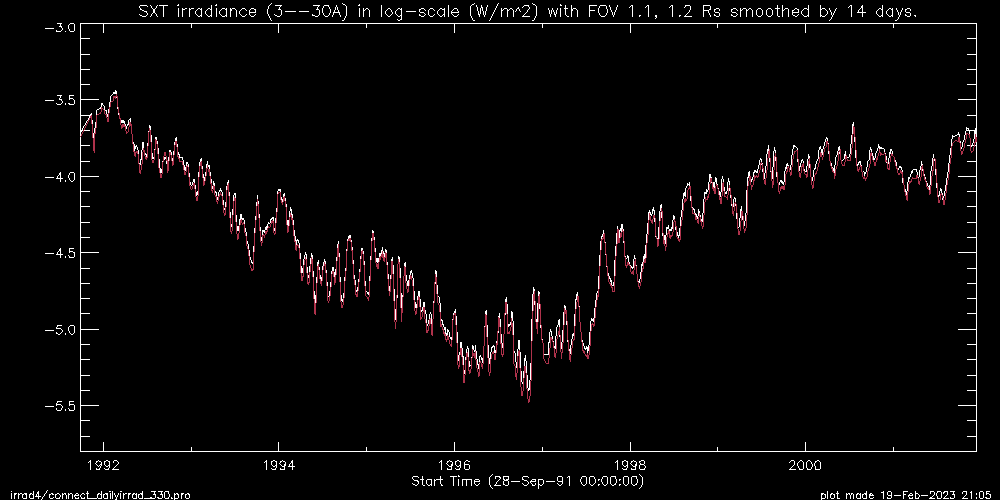
|
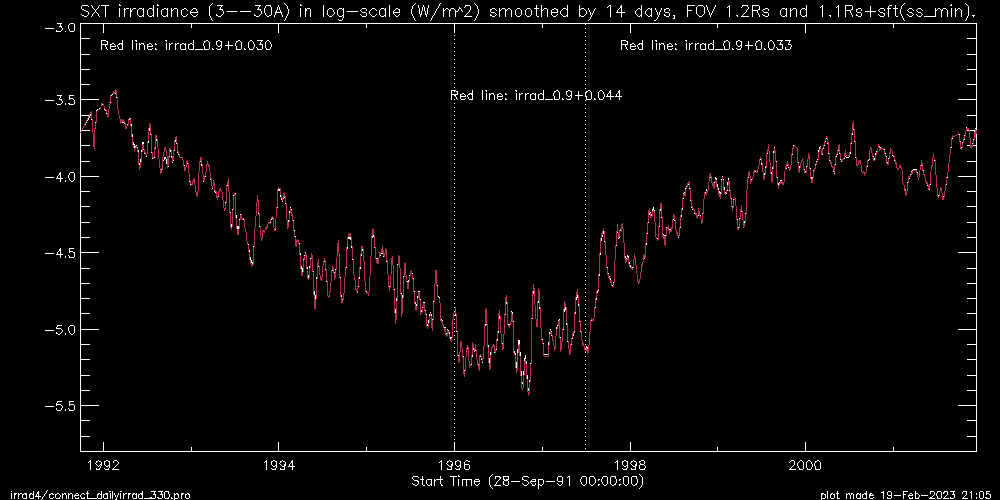
|
| SXT irradadiance 3-30A, FOV: 0.9Rs vs 1.2Rs | shifted curves (0.507, 0.442, 0.468) |
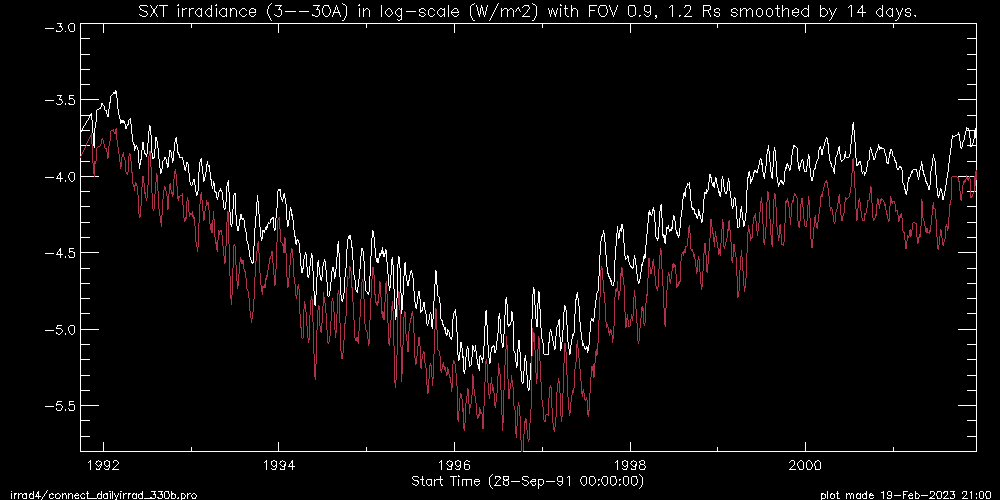
|
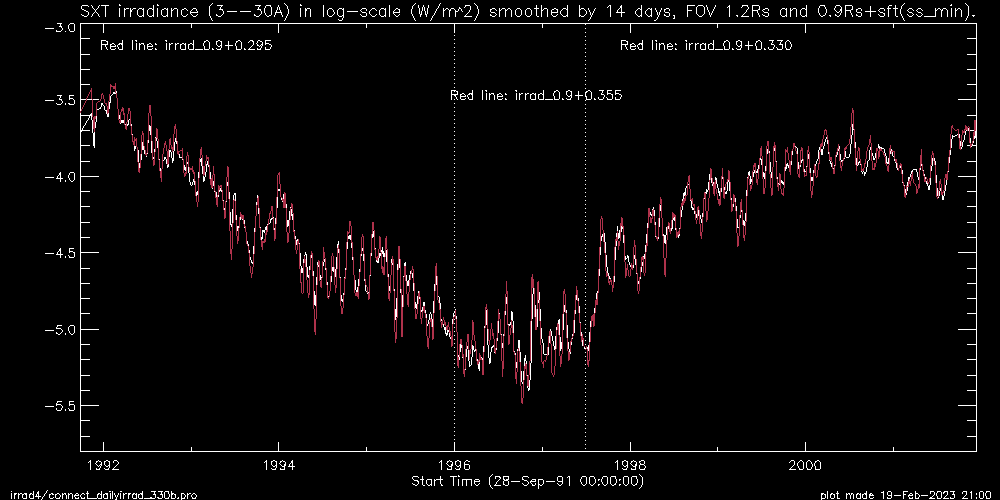
|